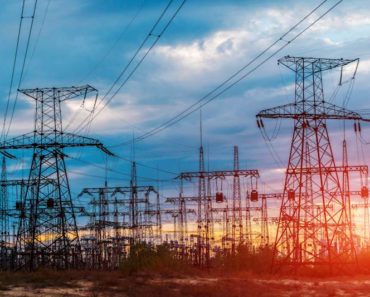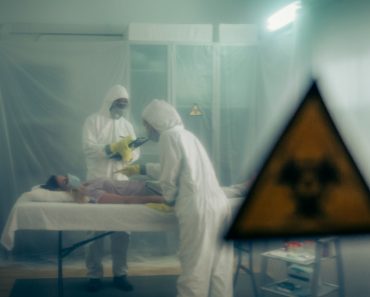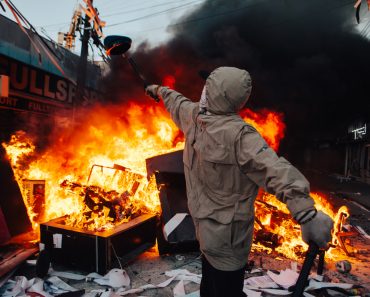Before I get into emergency blankets and bivvies, let me point out three things.
First, bring enough clothing to keep you alive in the coldest nighttime temperature. Without that, an emergency blanket may be enough.
Second, emergency blankets don’t produce heat, they only reflect it and help prevent heat loss, so they are much more effective when used early on, before you are hypothermic, while you still have heat for it to contain and to reflect back to you. Otherwise, it’s kind of like wrapping a popsicle in tinfoil and wondering why it’s not warming up.
Third, carry reliable (for you) fire starting gear, water, and a snack so you can make heat. Fire is an amazing tool, but Murphy loves survival ordeals, so you need a plan in case you can’t make fire. If it can happen to others, it can happen to you.
5 Reasons You May Not Be Able to Make Fire
- Your security situation may not permit it.
- You could be so cold that you can’t work your fingers to use matches, operate a lighter or operate another fire starter.
- Severe weather may make impossible to build a fire.
- You may get caught in absolute darkness with no light to gather wood.
- There simply may not be any wood or other fuel to burn.
Your body needs water to properly thermoregulate and needs food for fuel. So, your chances of surviving a cold night are better if you are able to stay hydrated and fed. Unfortunately, survivors often begin survival ordeals exhausted, dehydrated, hungry, banged up, cold, and scared.
Considerations in Choosing Emergency Blankets & Bivvies
Emergency blankets and bivvies have come a long way since the first SPACE® blanket was developed in 1964. The first bags I saw in survival kits in the 1980’s in England were simply poly bags that provided a moisture barrier and trapped heat. Materials have improved some since then, but the basic principle is the same.
Blanket, Bivvy or Something Else? All of the Above? How Many?
When constructing survival shelter, you ideally want shelter you can be under, on, in and alongside.
- Under – If there is any chance of precipitation or dew, you need to be under an overhead covering to keep you dry to prevent heat loss via evaporation in the cold or provide shade in the heat. In the case of shade, layers with space in between them help.
- On – You also want to prevent heat loss or gain via conduction. Your thermal mass is much smaller than that of the Earth, so you’ll conduct cold if you lay directly on the cold ground, no matter how much insulation you pile on top of you. Without a ground pad or sit-upon, creating a bed of coals and covering it with earth, gathering a big pile of dry plant matter or making a raised platform or hammock are your best options. On wet ground or in country with parasitic arthropods such as chiggers and ticks, you can contain a grass or leaf mattress it in a contractor bag or 55-gallon drum liner as a barrier and to hold your mattress together. It will have to be much thicker than you think because your body weight will crush it flat. If you lay on snow or on damp ground, moisture will soak into your clothing robbing it of insulative value.
- In – A bivvy or blanket will prevent heat loss via long wave radiation and provide a little protection against wind. This is what most people think of when they think of the role of an emergency blanket or bivvy, but it’s just one way we lose heat.
- Alongside – Last you should build your shelter next to a wind break to prevent heat loss via convection. You can also rig a lean-to, build a wattle wall, dig a trench or simply scrape a nest with the side of your boot if that is all you can manage. (Lundin, 2003)
If you have room for an overhead cover, a bivvy bag, a bag underneath you, and cordage, then carry that. You can even add a clear poncho and duct tape build a greenhouse shelter like Mors Kochanski popularized and stay quite comfortable in the snow. It will all fit into a coat or cargo pocket and can be included in a 2-part Pocket Survival Kit (PSK) … which brings us to size and weight constraints.
Size & Weight Constraints – Which models you choose and how many are going to be limited by the size of survival kit you carry. I strongly recommend carrying a PSK in your pockets or on your person, even if you carry a larger kit in a satchel or pack because bags and packs get set down when we rest, drive, eat and so on, which leads to survivors getting separated from their survival gear.
A larger kit can give most survivors more capability and sustainment time, but the larger a kit is, the more likely it is that the survivor will take it off and get separated from it. Carry the basics in your pockets even if you carry a larger kit in a satchel, pouch, pack, or something else.
If you’re carrying a satchel-sized survival kit, you can carry a drum liner, a thin sit-upon pad, a nice multi-layer water-resistant bivvy, and re-usable, hooded SPACE® or combat casualty blanket with grommets in the corners or even a sil-nylon tarp or military poncho for overhead shelter.
Single-Use vs. Reusable – There are psychological obstacles to opening a single-use EMERGENCY blanket. For some survivors, it’s like admitting they screwed up and are officially lost or stuck out for the night, so they put it off. If you read my second point at the start of the article, then you know that’s a good way to turn into a popsicle. Others don’t want to open it because of the expense. A Blizzard® bag is about $55, which is a lot of money for some folks, so they might avoid using it early on. Again … popsicle.
Reusable blankets and bivvies don’t have the same psychological barriers to their use. You can take it out and use it, then fold it up and put it away, and repeat. It’s not an admission. It’s not an expense.
Reusable gear also tends to be more rugged and last longer, which is important in long survival ordeals. You’ll buy once and cry once, or at least less often, in the happy event that you use them enough to wear them out.
Material – Material is important because it determines whether your gear rustles and keeps you awake. It also determines whether it is water-resistant or breathable or both. Together with thickness and construction, it also determines durability.
Color – Do you envision situations where you might not want to be found? Would you like a choice? If you would choose a subdued color. The reflective side of emergency blankets and bivvies is still great for signaling.
I spotted the shine from Mylar® from a mile away while hunting in the Sonoran Desert. When I investigated, it was just a balloon launched as a school project, but hopefully it made some school kid from California happy to find out where it landed.
Size – Make sure the product is big enough to do what you need it to do. Practice building a shelter before including it in your kit. Blankets should be big enough to turn into a bivvy by tying the sides together around pebbles. Could you be sheltering more than one person? Then you can plan for that with 2-person bivvies and blankets.
Metalized PET and BoPET Emergency Blankets & Bivvies
Better known under the brand name Mylar®, BoPET (Biaxially-oriented Polyethylene Terephthalate) is a form of stretched polyethylene that is metalized to reflect heat. If you’ve ever slept in it, it takes some getting used to. It rustles loudly with the slightest movement and feels like you are wrapped in crinkle paper. BoPET bivvies don’t breathe either, so it’s like sleeping in a noisy contractor bag.
BoPET it is a single-use material. Once you open the package and unfold it, there is no putting the genie back in the bottle, certainly not in a survival ordeal, but you can fold it up best you can and bind it.
While Mylar® doesn’t tear easily, think blankets are easily punctured and once compromised, they tear like packing tape. There are many brands of BoPET blankets in a variety of dimensions and thicknesses. The original SPACE® blanket is one of the better examples of a BoPET blanket, but numerous companies sell their own.
Thin Mylar® moves easily in the slightest breeze making it a great material to make emergency signals out of.
Metalized Polyethylene Emergency Blankets & Bivvies
SolKoa® and Survive Outdoors Longer® both make metalized polyethylene blankets. This material is tougher, quieter, and slightly less uncomfortable to sleep under than Mylar. That makes it my material of choice for emergency bivvies in Pocket Survival Kits carried on the survivor’s person.
Multi-layer Survival Blankets & Bivvies
Blizzard® makes a 3-layer survival bag and a jacket that is a long, hooded vest of the same material with clear poly sleeves. The bag comes vacuum packed in a package a little larger than a VHS cassette tape, if you’re old enough to know that is. The vest is smaller but offers good protection in the fetal position. Both products use a system of shock cord and accordioned layers of metalized material to create dead air space, increasing the insulation value. Blizzard® even claims they can be used repeatedly, and they can, for a time. They just won’t pack down as small.
Another useful multi-layer emergency blanket is the hooded SPACE® blanket. You might know it without the hood as the military issue Combat Casualty Blanket. These blankets feature four layers and are bulky with emergency blankets, almost a cross between an emergency blanket and a light tarp. They they have grommeted corners and ripstop material. Like the Blizzard® product, they are popular with SAR personnel, Wilderness First Responders, and military personnel. I have used them since the 1980’s and the product has found a niche in my bag.
Metalized Synthetic Fabrics
These are used in metalized travel blankets like the Nano Heat® blanket from Adventure Medical Kits®, which is a metallicized travel blanket with a DWR coating. It won’t shed a downpour like polyethylene or Mylar® blankets, but it’s reusable. The Nano Heat® is small for a survival blanket, but great for a travel blanket so we use them in my wife’s and our toddler’s Go Bags.
This category also includes products like the excellent breathable Escape® bivvy by Survive Outdoors Longer®. Unfortunately, this company packs it’s bivvy sacks of all materials rolled up into cylinder shapes, which doesn’t lend itself to packing in pockets and kits, so you’ll have to unroll them and repack them flat unless you don’t mind a cylinder digging into your thigh or your ribs. Even still, I like the Escape® bivvy and I carry one in my own Go Bag.
Wool Blankets, Military Ponchos, Poncho Liners, and Poncho/Liner Systems
If you have the room, these are way more reusable and better suited to a long wilderness trek or surviving the apocalypse, but they are in a whole different class and would make a great topic for another article.




























